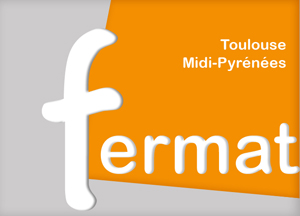Experimental and numerical assessment of H2 combustion potential: extreme events in laminar premixed burners and flame stability in non-premixed swirled injectors
Andrea Anielo
Mercredi 29 mars à 10 h 00 – Amphitéâtre Nougaro
Abstract:
Recent years have witnessed a raising alarm for climate change and predicted apotential lack of energy supply for the next future. In this respect, the combus-
tion community is looking for affordable and sustainable solutions to solve these issues. Green-hydrogen can be potentially produced from renewable electricity and is a promising alternative to decarbonize the current energy mix. Nevertheless, its exploitation in combustion systems remains limited due to its unique combustioncharacteristics and most applications are generally limited to 20%vol of H2 in the fuel blend. Only very recently we assisted to the spread of new technologies that allow to sustain greater hydrogen content. In view of that, this work focuses on fundamental aspects of hydrogen combustion as part of CH4/H2 blends or for pure hydrogen-air mixtures either in laminar premixed flames or in turbulent non-premixed conditions. The analysis of these configurations is performed via both experimental and numerical tools to shed light on fundamental mechanisms related to H2 combustion.
Experiments are conducted on two multi-perforated premixed burners, originally designed for methane-air mixtures, to assess the limits of H2 substitution and investigate potential risks associated to it. Results are presented by means of stability maps and the impact of hydrogen addition on blow-out and flashback limits is then analyzed. Measurements unveil different flashback regimes and several triggering mechanisms are put in evidence as function of the H2 content.
Second, high fidelity Large Eddy Simulation is used to investigate the impact of a central pilot hydrogen injection on the Flame Transfer Function (FTF) of a
swirled premixed methane-air flame. This study, validated on experimental results, show that the central recirculation zone responds to specific oscillation frequencies, undergoing a pronounced axial movement that modulates the penetration of the hydrogen central jet that, in turn, affects the flame structure and the position of the flame root. This dynamics interferes with the perturbation generated by the hydrodynamic eddies shed at the injector rim, explaining the trend of the FTF.
Finally, high-fidelity LES are presented for non-premixed H2-air flames stabilized on a novel injector for gas turbine applications named HYLON. Two flame archetypes are investigated: one attached to the injector lip and the second one aerodynamically stabilized. A modeling approach for non-premixed flames is proposed and validated against experimental results. The flame structure and the flame stabilization mechanisms leading to the two flame types are scrutinized. The transition between the lifted and the attached flames is investigated.





